Detail shots- some tips on shiny reflective objects and more.
Jul 6, 2017 15:54:35 #
I approach detail shots at weddings drawing on my day job experience as a commercial photographer- I get to shoot lots of objects during the week. I also like think of wedding detail shots a artistic still-life images as well- not just like ordinary product illustrations.
Attached, is one of my favorite cartoons about commercial photographers. This spoof is a bit of an exaggeration but it is surprising to see, actually, how many lights are sometimes used for what seemingly is a a simple enough product illustration. I mean Fresnel spots, floods, soft-boxes, umbrellas and not to mention all kinds of different reflectors. There are also all types of shenanigans like placing products on glass or Plexiglas, lighting things from below or placing other props and reflective items underneath to create interesting "bokeh".
Lighting of shiny or highly polished items can be a science in itself. Oftentimes lighting tents are constructed of seamless paper or translucent diffusion materials. Sometimes it is a days work just to prepare a set to photograph some jewelry or a chrome-plated small appliance like a toaster or a blender.
Obviously, as wedding shooters, working on the fly, we have to devise some simple and quick or improvised methods that will work with a wide variety of fabrics, flowers and wedding rings.
First...let's talk about highly reflective surfaces and objects. Where we are photographing a mirror, a piece of jewelry or even a car there is a common approach. Think of it this way, we are photographing a reflection of the light source and other objects in that reflective subject. If the item "sees" the light source and reflect that light back to the camera- that is known as LIGHT FIELD PHOTOGRAPHY. If, somehow the item does not not "see" the source and does not reflect that light back to the camera, that is called DARK FIELD PHOTOGRAPHY. In a dark field image, we still see the item but it is not rendered naturally as a shiny highly reflective item. In other words, we don't want to see a gold ring rendered as black or dull as if it were tarnished. To properly photograph shiny objects we need to create the appropriate lighting field with a broad diffused light source and reflectors.
I have attached a commercial shot that I did of gold and silver coins. You will notice that most of the coins look like real gold and silver but a few of them show up as BLACK. The realistic ones are in the light field and the ones that came out BLACK are in the dark field. It all depends on how they were tilted in relation to the overhead light source- most of then reflect the proper amount of light back to the camera. Sometimes, a shot requires a combination of both dark and light fields. A chrome plated item in a light tent on a white background may blend into the background so we place some black ribbons in the tent to create some outlines or separation in the reflection.
OK,,,now that we have a little background in commercial still life shooting, let's boil it down to some simple techniques that we can do on the fly.
Personally, I am one of those nuts who carry my mono-light/soft-box unit where ever I go. I use it as a main light for formals and portraits. It makes a perfect detail shot light. Attached in a shot my my simple one-light system. The soft-box is high-overhead and to the back and/or side of the item and a small white or silver (reversible) reflector works as the fill source. I can create both light and dark fields with simple movements of the main light and the reflector. The camera is shown on a camera stand so I could make the shot but I usually just hand hold it. This system works beautifully with flowers, shoes, papers like the wedding invitation, music sheets or marriage documents as well.
Now here's the good part, especially if you don't want to drag a mono-light around. The basic method works very nicely with window light form a north or sky lighted winnow or sunlight diffused with translucent curtains or drapes. It can even be done out of doors and all you need is the reflector. The reflector can also be used as a gobo to block light and create a partial dark filed to give rings and things shape if necessary. The music sheet and flowers shot is done with window light. A speed-light bounced off a wall or ceiling can work but you can't tell exactly what you are going to get unless you chimp and adjust as needed.
All of this is based on the theory or ANGLE OF INCIDENCE- the angle of incandescence is equal to the angle of reflection. STUDY THAT.
Please see my next post for the aforementioned images. I have to use another device to access my old files.
I hope this article proves to be useful.
Kindest regards, Ed
Attached, is one of my favorite cartoons about commercial photographers. This spoof is a bit of an exaggeration but it is surprising to see, actually, how many lights are sometimes used for what seemingly is a a simple enough product illustration. I mean Fresnel spots, floods, soft-boxes, umbrellas and not to mention all kinds of different reflectors. There are also all types of shenanigans like placing products on glass or Plexiglas, lighting things from below or placing other props and reflective items underneath to create interesting "bokeh".
Lighting of shiny or highly polished items can be a science in itself. Oftentimes lighting tents are constructed of seamless paper or translucent diffusion materials. Sometimes it is a days work just to prepare a set to photograph some jewelry or a chrome-plated small appliance like a toaster or a blender.
Obviously, as wedding shooters, working on the fly, we have to devise some simple and quick or improvised methods that will work with a wide variety of fabrics, flowers and wedding rings.
First...let's talk about highly reflective surfaces and objects. Where we are photographing a mirror, a piece of jewelry or even a car there is a common approach. Think of it this way, we are photographing a reflection of the light source and other objects in that reflective subject. If the item "sees" the light source and reflect that light back to the camera- that is known as LIGHT FIELD PHOTOGRAPHY. If, somehow the item does not not "see" the source and does not reflect that light back to the camera, that is called DARK FIELD PHOTOGRAPHY. In a dark field image, we still see the item but it is not rendered naturally as a shiny highly reflective item. In other words, we don't want to see a gold ring rendered as black or dull as if it were tarnished. To properly photograph shiny objects we need to create the appropriate lighting field with a broad diffused light source and reflectors.
I have attached a commercial shot that I did of gold and silver coins. You will notice that most of the coins look like real gold and silver but a few of them show up as BLACK. The realistic ones are in the light field and the ones that came out BLACK are in the dark field. It all depends on how they were tilted in relation to the overhead light source- most of then reflect the proper amount of light back to the camera. Sometimes, a shot requires a combination of both dark and light fields. A chrome plated item in a light tent on a white background may blend into the background so we place some black ribbons in the tent to create some outlines or separation in the reflection.
OK,,,now that we have a little background in commercial still life shooting, let's boil it down to some simple techniques that we can do on the fly.
Personally, I am one of those nuts who carry my mono-light/soft-box unit where ever I go. I use it as a main light for formals and portraits. It makes a perfect detail shot light. Attached in a shot my my simple one-light system. The soft-box is high-overhead and to the back and/or side of the item and a small white or silver (reversible) reflector works as the fill source. I can create both light and dark fields with simple movements of the main light and the reflector. The camera is shown on a camera stand so I could make the shot but I usually just hand hold it. This system works beautifully with flowers, shoes, papers like the wedding invitation, music sheets or marriage documents as well.
Now here's the good part, especially if you don't want to drag a mono-light around. The basic method works very nicely with window light form a north or sky lighted winnow or sunlight diffused with translucent curtains or drapes. It can even be done out of doors and all you need is the reflector. The reflector can also be used as a gobo to block light and create a partial dark filed to give rings and things shape if necessary. The music sheet and flowers shot is done with window light. A speed-light bounced off a wall or ceiling can work but you can't tell exactly what you are going to get unless you chimp and adjust as needed.
All of this is based on the theory or ANGLE OF INCIDENCE- the angle of incandescence is equal to the angle of reflection. STUDY THAT.
Please see my next post for the aforementioned images. I have to use another device to access my old files.
I hope this article proves to be useful.
Kindest regards, Ed
Jul 6, 2017 16:07:27 #
Images for previous post.
Some notes:
The reflector I normally use for this setup is a reversible white/silver. I gold reflector can be use to accentuate the color of gold jewelry and/or add a warmer tone to marriage documents, Bible pages and religious artifacts.
If you have a macro lens, use it for your closeup detail shots. Macros are especially corrected for close focus situations. Most modern general purpose prime and zoom lenses can be used effectively as well. In the average wedding album or computer screen image, the degree of enlargement is not critical.
Some notes:
The reflector I normally use for this setup is a reversible white/silver. I gold reflector can be use to accentuate the color of gold jewelry and/or add a warmer tone to marriage documents, Bible pages and religious artifacts.
If you have a macro lens, use it for your closeup detail shots. Macros are especially corrected for close focus situations. Most modern general purpose prime and zoom lenses can be used effectively as well. In the average wedding album or computer screen image, the degree of enlargement is not critical.
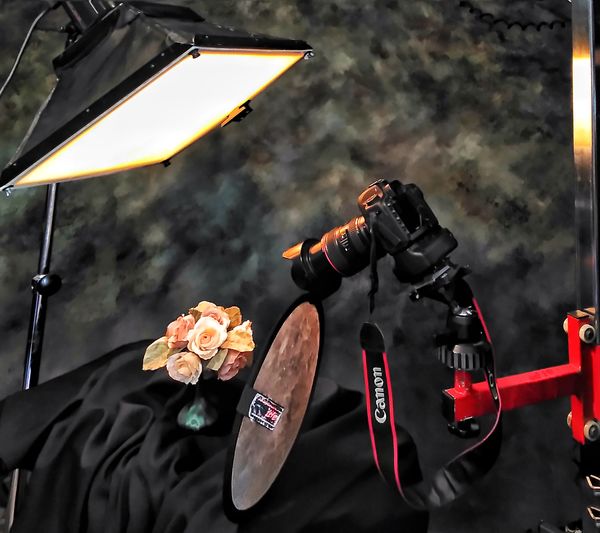
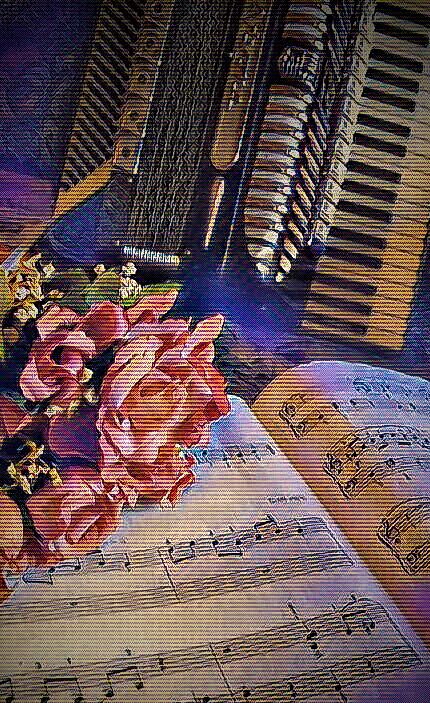
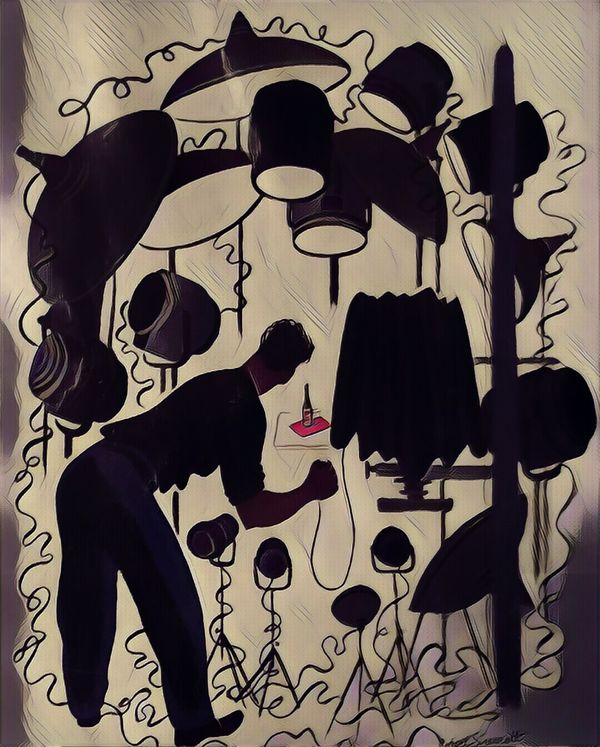
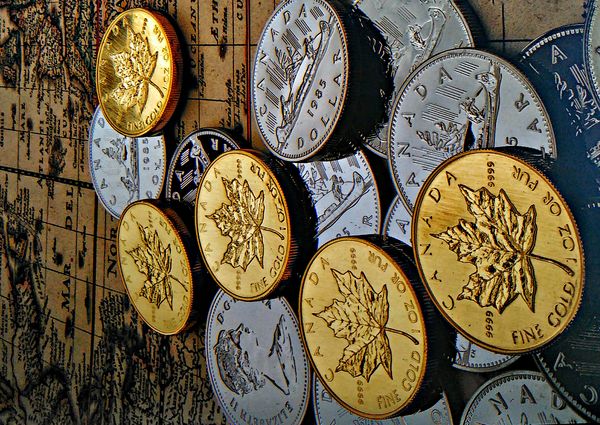
Jul 7, 2017 16:09:00 #
Ed, I've asked this question of many commercial photographers, and even some that specialize in jewelry photography. Nobody has ever been able to tell me how to really catch the "fire" in a diamond. I have to use photoshop to get the colors and dancing lights.
Do you have any tips or methods for doing such? I've tried using various types of lights, even used a "puck light" that came directly from a jewelry store that went out of business. Could never capture what I saw in the store.
If we could figure that out, we'd be light years ahead of any wedding photographers that I know.
Do you have any tips or methods for doing such? I've tried using various types of lights, even used a "puck light" that came directly from a jewelry store that went out of business. Could never capture what I saw in the store.
If we could figure that out, we'd be light years ahead of any wedding photographers that I know.
Jul 7, 2017 17:20:54 #
bkyser wrote:
Ed, I've asked this question of many commercial ph... (show quote)
True that. I have always felt that my diamond ring pics always made the diamond seem too small.
Jul 8, 2017 10:46:51 #
Info coming soon...shooting today...will post soon. Interesting topic!
Jul 12, 2017 22:41:53 #
Hi gang! Sorry for the delay- it's been kinda busy here.
Diamonds and jewelry. I have sort of a long history with jewelry. My grandfather was master watchmaker/clock maker and a jeweler. This does not automatically make me an expert on the photography of jewelry and precious stones but the experience helped. Grandpa had his business in a New York City wholesale jewelry exchange where he specialized in repairing and restoring expensive watches and clocks. He also set diamonds into watch cases and and dials. In that exchange there were all kinds of jewelry specialists such as diamond cutters and setters, rhodium plating specialists, silver and goldsmiths and more. As a kid, I would visit his booth and see all theses specialized craftspeople in action- I also picked up a lot of the terms, slang and nomenclature of the diamond business. So terms like "fire" cut, setting and color are familiar to me. So here's some facts and tips about shooting diamonds.
At most jewelry stores, diamond broaches and engagement rings are usually displayed under fairly intense rather concentrated lamps.The actual bulbs used are called jewelry lamps and tend to be biased to the colder or bluish areas of the spectrum. As an aside, butcher shop display lamps are red biased (to make the red meat more red) as are, believe it or not, mortuary lamps, used in funeral homes at open casket visitations so that poor departed Uncle Oscar will have a nice "tan"! Ugh.
Back to diamonds- Better quality diamonds tend to be of a colder or whiter tone. Yellow diamonds are just as tough but are considered industrial diamonds that are used on specialized drill bits and glass cutters. The "fire" in a decorative stone is created by specular highlights and the kinda of prismatic effects of different spectral colors as light bounces off the various facets of the stone- usually within the stone rather than on its surface. Certain setting, such as the Tiffany style may become trans-illuminated from light entering from below or the sides of the stone- this adds extra fire.
It's nearly impossible to know exactly how much "fire" you can capture unless you have modeling lights on your flash equipment or use a continuous light source. You need to work the light until you get the right ANGLE OF INCIDENCE to create the exact kinda reflections you are seeking but you will SEE it when you get it. With some rings it is very very difficult to get fire in all the stones- like the kind with a OVAL or PARE SHAPED stone in the middle and tapered baguettes along the edges of the setting- all the stones may not catch the light in exactly the same manner.
I like to try to get the best shot right in the camera, however, fact is, most shots of diamond rings that you see in advertisements, the rings are heavily retouched. In the olden days, they were airbrushed and nowadays they are Photo Shopped- digitally enhanced! Those little star-bursts are usually the result of digital retouching. Problem is, if you use a star filter, you need a little hot spot somewhere on the stone or the setting to get the star effect. A very diffused light source or a tented set is not specular enough and the filter will just diffuse the entire image. I will sometimes luck out with a diffused light source with a small hole in the scrim- just enough to create a tiny hot spot. I use black Nylon screening or Tulle netting fabric rather than a filter over the lens.
If the stone looks too small, a tighter shot with a macro lens might help.
If you have a jewelry lamp, try to create a custom white balance that is slightly on the cooler side or at least PURE white- stay away for yellow or red unless you are working with an exotic diamond with especially odd coloration. Although our eyes perceive the jewelry light as bluish, the camera is still seeing incandescent light and may record it as too yellow. Perhaps LED full spectrum lights are worth a try.
I hope this helps!
Ed
Diamonds and jewelry. I have sort of a long history with jewelry. My grandfather was master watchmaker/clock maker and a jeweler. This does not automatically make me an expert on the photography of jewelry and precious stones but the experience helped. Grandpa had his business in a New York City wholesale jewelry exchange where he specialized in repairing and restoring expensive watches and clocks. He also set diamonds into watch cases and and dials. In that exchange there were all kinds of jewelry specialists such as diamond cutters and setters, rhodium plating specialists, silver and goldsmiths and more. As a kid, I would visit his booth and see all theses specialized craftspeople in action- I also picked up a lot of the terms, slang and nomenclature of the diamond business. So terms like "fire" cut, setting and color are familiar to me. So here's some facts and tips about shooting diamonds.
At most jewelry stores, diamond broaches and engagement rings are usually displayed under fairly intense rather concentrated lamps.The actual bulbs used are called jewelry lamps and tend to be biased to the colder or bluish areas of the spectrum. As an aside, butcher shop display lamps are red biased (to make the red meat more red) as are, believe it or not, mortuary lamps, used in funeral homes at open casket visitations so that poor departed Uncle Oscar will have a nice "tan"! Ugh.
Back to diamonds- Better quality diamonds tend to be of a colder or whiter tone. Yellow diamonds are just as tough but are considered industrial diamonds that are used on specialized drill bits and glass cutters. The "fire" in a decorative stone is created by specular highlights and the kinda of prismatic effects of different spectral colors as light bounces off the various facets of the stone- usually within the stone rather than on its surface. Certain setting, such as the Tiffany style may become trans-illuminated from light entering from below or the sides of the stone- this adds extra fire.
It's nearly impossible to know exactly how much "fire" you can capture unless you have modeling lights on your flash equipment or use a continuous light source. You need to work the light until you get the right ANGLE OF INCIDENCE to create the exact kinda reflections you are seeking but you will SEE it when you get it. With some rings it is very very difficult to get fire in all the stones- like the kind with a OVAL or PARE SHAPED stone in the middle and tapered baguettes along the edges of the setting- all the stones may not catch the light in exactly the same manner.
I like to try to get the best shot right in the camera, however, fact is, most shots of diamond rings that you see in advertisements, the rings are heavily retouched. In the olden days, they were airbrushed and nowadays they are Photo Shopped- digitally enhanced! Those little star-bursts are usually the result of digital retouching. Problem is, if you use a star filter, you need a little hot spot somewhere on the stone or the setting to get the star effect. A very diffused light source or a tented set is not specular enough and the filter will just diffuse the entire image. I will sometimes luck out with a diffused light source with a small hole in the scrim- just enough to create a tiny hot spot. I use black Nylon screening or Tulle netting fabric rather than a filter over the lens.
If the stone looks too small, a tighter shot with a macro lens might help.
If you have a jewelry lamp, try to create a custom white balance that is slightly on the cooler side or at least PURE white- stay away for yellow or red unless you are working with an exotic diamond with especially odd coloration. Although our eyes perceive the jewelry light as bluish, the camera is still seeing incandescent light and may record it as too yellow. Perhaps LED full spectrum lights are worth a try.
I hope this helps!
Ed
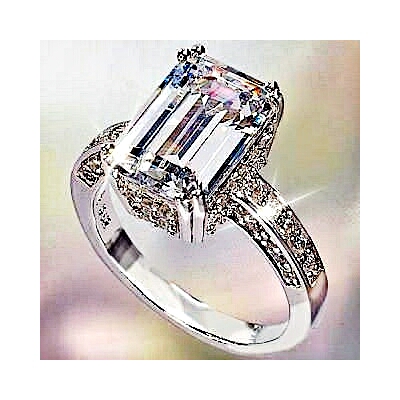
Jul 13, 2017 09:57:10 #
E.L.. Shapiro wrote:
Hi gang! Sorry for the delay- it's been kinda bus... (show quote)
Sounds like I may end up needing to find that jeweler's light again, and experiment some more. I'm guessing I'll probably still have to do a lot in PP, but I really would like to get the "fire" in camera, and just deal with the "starburst" in PP, so I can control it.
Jul 13, 2017 17:09:32 #
Sounds like.we.all may have to make a trip north (okay, east for me) for a day long seminar under Ed 😀.
Jul 14, 2017 08:28:05 #
Tim Stapp wrote:
Sounds like.we.all may have to make a trip north (okay, east for me) for a day long seminar under Ed 😀.
Let me check to see if my passport is up to date.
Jul 14, 2017 17:10:48 #
Tim Stapp wrote:
Sounds like.we.all may have to make a trip north (okay, east for me) for a day long seminar under Ed 😀.
Wouldn't that be great. I feel like I owe him a computer. :)
If you want to reply, then register here. Registration is free and your account is created instantly, so you can post right away.



